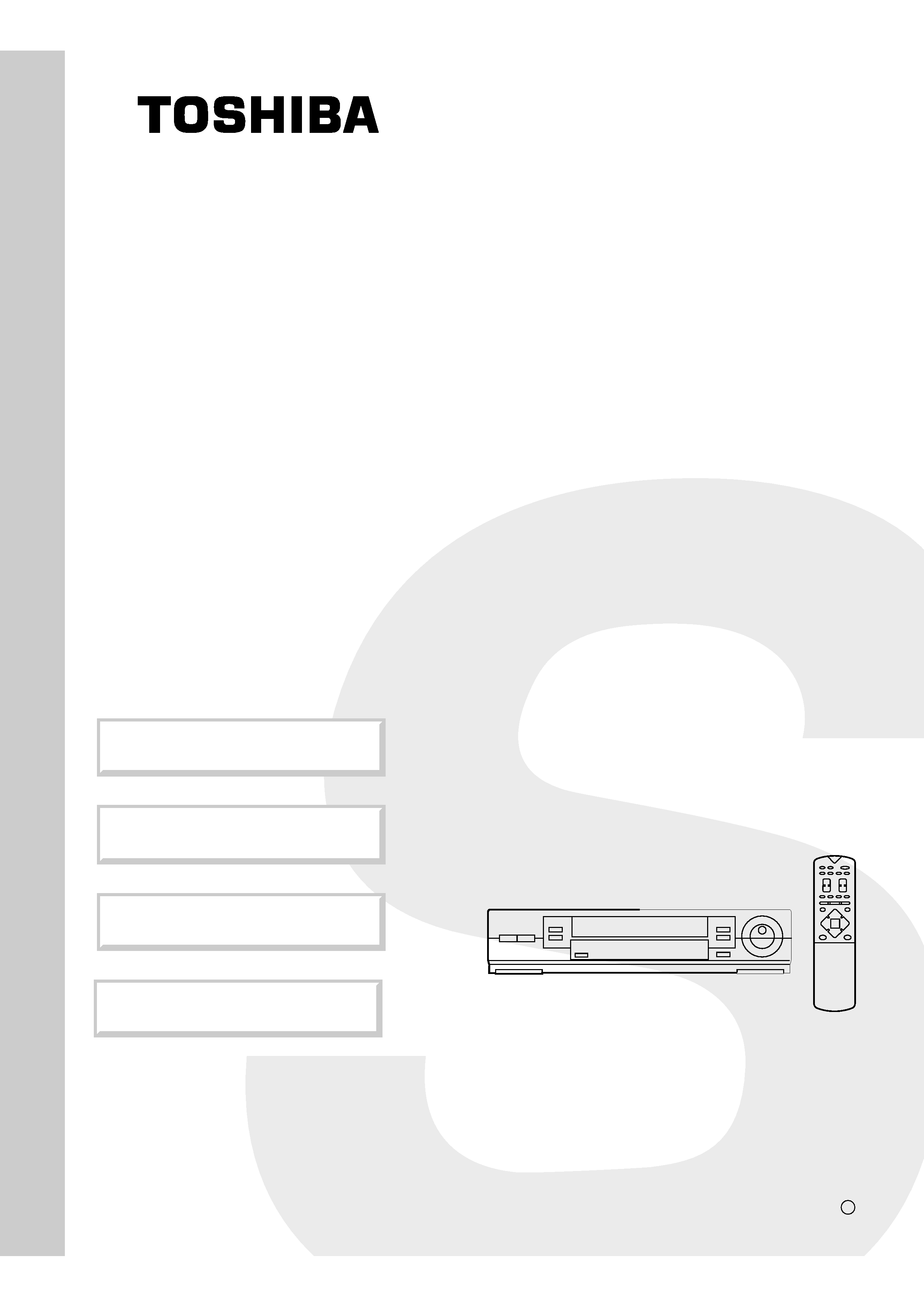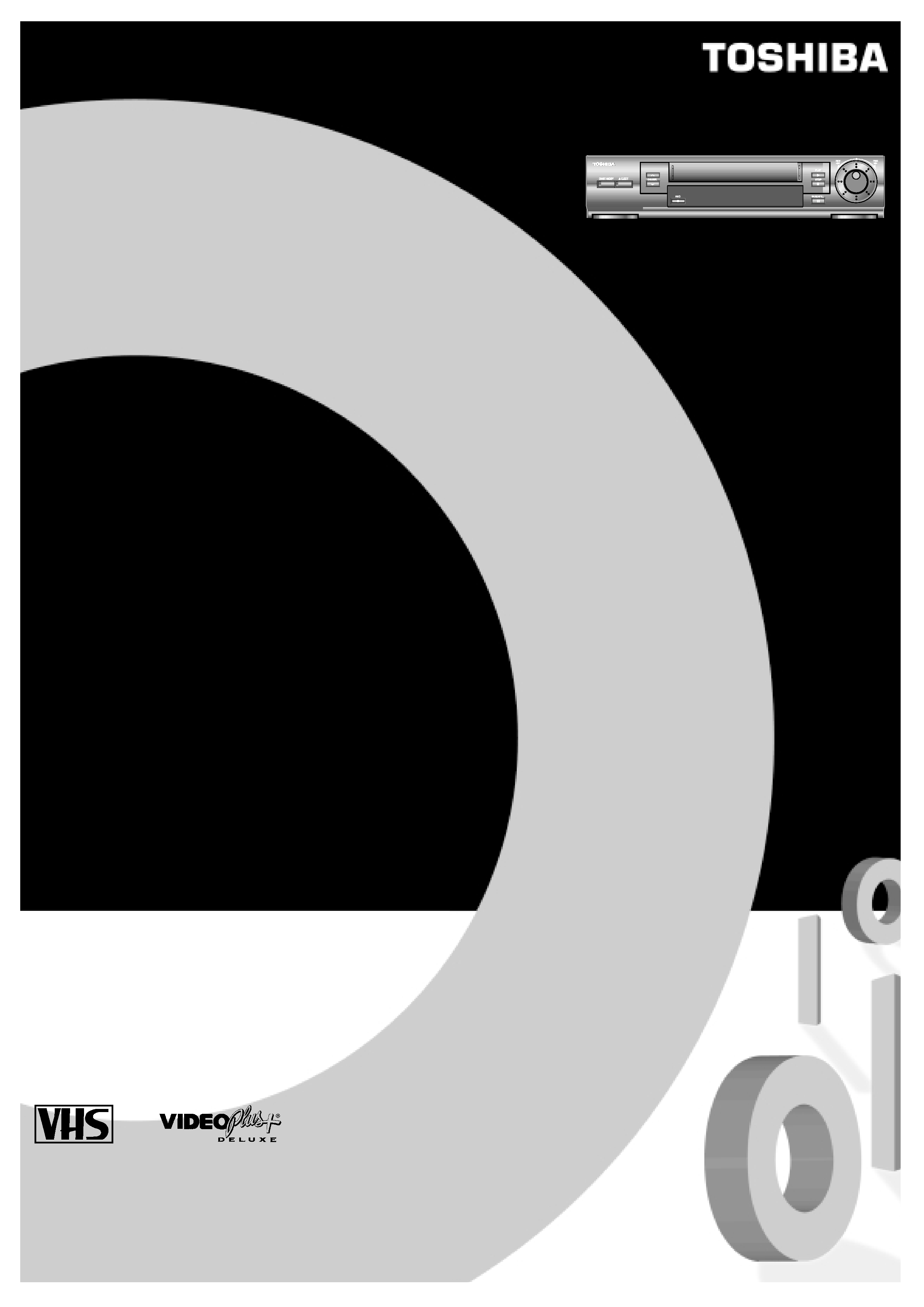
VIDEO CASSETTE RECORDER
SERVICE MANUAL
NC MECHANICAL DECK
V-830UK
FILE NO. 110-200008
May, 2000
5
Genaral Descriptions
Adjustment Procedures
Servicing Diagrams
Parts List

SECTION 1
GENERAL DESCRIPTIONS
1. OWNER'S MANUAL
Top
Adjustment Procedures
Servicing Diagrams
Parts List
Top
Adjustment Procedures
Servicing Diagrams
Parts List

OWNER'S MANUAL
PAL
NTSC4.43
V-860UK
V-830UK
70971827

Do not ...
GENERAL
INFORMA
TION
Some "DOs" and "DON'Ts" for you
This equipment has been designed and manufactured to meet international safety standards but, like any
electrical equipment, care must be taken if you are to obtain the best results and safety is to be assured. So,
please read the points below for your own safety. They are of a general nature, intended to help you with all
your electronic consumer products and some points may not apply to the goods you have just purchased.
Air Circulation ...
GENERAL INFORMATION
For your safety
66
All Toshiba television stands are designed to house Toshiba
video recorders and other Toshiba AV equipment whilst
providing adequate ventilation. However, if you do not use a
Toshiba stand, ensure that there is free space of at least 10cm
at the sides and rear and 7cm above the video recorder to
provide adequate ventilation.
Moisture Condensation ...
Never operate the VTR immediately after moving it from a
cold location to a warm location. Leave it for TWO TO THREE
hours without operating it. When the VTR is exposed to such
a change in temperature, moisture may condense on the
cylinder inside of the VTR one of its most crucial internal
parts. If moisture condensation occurs inside the VTR, the
cassette tape may stick to the surface of the cylinder causing
damage to the tape itself and the video head.
Mains Supply ...
The mains supply required for this equipment is 230 240V
AC 50Hz. Never connect to a DC supply or any other power
source. DO ensure that the VTR is not standing on the mains
lead. DO NOT cut off the mains plug from this equipment,
this incorporates a special Radio Interference Filter, the
removal of which will impair its performance. In the UK, the
fuse fitted in this plug is 3A, and is approved by ASTA or BSI
to BS1362. It should only be replaced by a correctly rated
and approved type and the fuse cover must be refitted. IF IN
DOUBT PLEASE CONSULT A COMPETENT ELECTRICIAN.
Do ...
DO read the operating instructions before you attempt to
use the equipment.
DO ensure that all electrical connections (including the
mains plug, extension leads and inter-connections between
pieces of equipment) are properly made and in accordance
with the manufacturers' instructions.
Switch off and withdraw the mains plug when making or
changing connections.
DO consult your dealer if you are ever in doubt about the
installation, operation or safety of your equipment.
DO be careful with glass panels or doors on equipment.
DON'T remove any fixed cover as this may expose
dangerous voltages.
DON'T obstruct the ventilation of the equipment, for
example, with curtains or soft furnishings.
Overheating will cause damage and shorten the life of the
equipment.
DON'T allow electrical equipment to be exposed to rain or
moisture.
DON'T place hot objects such as candles or nightlights on,
or close to, the equipment. High temperatures can melt
plastic and lead to fires.
DON'T use makeshift stands and NEVER fix legs with wood
screws. To ensure complete safety, always fit the
manufacturer's approved stand or legs with the fixings
provided according to the instructions.
DON'T listen to headphones at high volume, as such use
can permanently damage your hearing.
DON'T leave equipment switched on when it is
unattended, unless it is specifically stated that it is designed
for unattended operation or has a standby mode. Switch off
using the switch on the equipment and make sure your
family know how to do this. Special arrangements may need
to be made for infirm or handicapped people.
DON'T continue to operate the equipment if you are in any
doubt about it working normally, or it is damaged in any way
switch off, withdraw the mains plug and consult your
dealer.
ABOVE ALL NEVER let anyone, especially children,
push anything into holes, slots or any other
openings in the case this could result in a fatal
electric shock.
NEVER guess or take chances with electrical
equipment of any kind it is better to be safe than
sorry.

GENERAL
For your safety Some "DOs" and "DON'Ts" for you. Please read this page before you begin
2
General Identification of the VTR Controls Front Controls, Rear Connections & Front Display Panel
4
Your Remote Control Familiarise yourself with the At a Glance illustration
5
Preparing your Remote Control Batteries, Effective Range information & Caring for the Remote Controller
6
Connecting the Leads and Auto Set Up Connecting the Aerial
7
Auto Set Up continued Tuning In: All Channels Found, Some Channels Found, No Channels Found
8
Checking the Auto Set Up Checking the Auto Set Up has stored the channels correctly
9
Restarting Auto Set Up
10
Channel Swapping When the VTR hasn't tuned in ALL of the stations in Auto Set Up
11
Manual Tuning and Cable TV Installation
12
Additional RF Tuning Information Reducing interference from other stations or AV equipment
14
Watching a Pre-Recorded Tape
15
Tracking and Picture Enhancing Digital Noise Reduction Obtaining the best picture and sound
16
Variable Speed Playback Picture Search, FF/Rew and Slow Motion
17
Trick Play Functions Holding and advancing images and frames on the screen
18
VIDEO Plus+® system Recording Recording television programmes using the PlusCode®
programming number
19
One Touch Record Advanced OTR Recording the selected video channel at the touch of a button
20
Using On-Screen Programming Setting up the VTR to record
21
User Settings Presetting the VTR to your chosen defaults:
22 26
nexTViewLink automatically recording the TV station;
22
TAPE SELECT selecting tape speed; 16:9 (Wide Screen) Compatibility;
23
NICAM; ECO MODE; ADJUST CLOCK;
24
TV PICTURE RECORD; PROGRAMME DELIVERY CONTROL (PDC);
25
MENU BACKGROUND; VIDEO Plus+ EXTEND; COLOUR ~ mono picture enhancement;
26
NTSC ON PAL TV
26
NTSC Playback Viewing NTSC tapes on PAL ONLY or 4.43 compatible televisions
27
Connections Connecting and positioning the Set top box receiver
28
Control of Set top box Channels via Set top box Control Brand Types and Channel Orders
29 32
Using Set top box Control to change channels on the Set top box and Set top box Monitor to view in stereo
32
Recording from Set top box VIDEO Plus+® Deluxe system recordings from Set top box, OTR and Timer Recordings
33
Hi-Fi Stereo Sound System Selecting between different soundtracks
34
Audio Dubbing Adding soundtracks to previously-recorded tapes
35
Editing a Video Tape Replacing scenes on a recorded tape
36
On-screen and VTR front panel displays
37
Index marks and Index searches Electronically `marking' tapes during recordings
38
Multi-Brand Remote Control
39
Additional Information for your reference
40
For your guidance, before calling for help... answers to some possible queries
41
For Your Notes
42 43
Specifications and Accessories information on the V-860UK and V-830UK VTR
Back cover
GENERAL
INFORMA
TION
GETTING
ST
AR
TED
BASIC
OPERA
TION
RECORDING
EDITING
ADDITIONAL
FUNCTIONS
GLOSSAR
Y
SET
TOP
BOX
CONTROL
ADDITIONAL
INFORMA
TION
GENERAL INFORMATION
Contents
66
